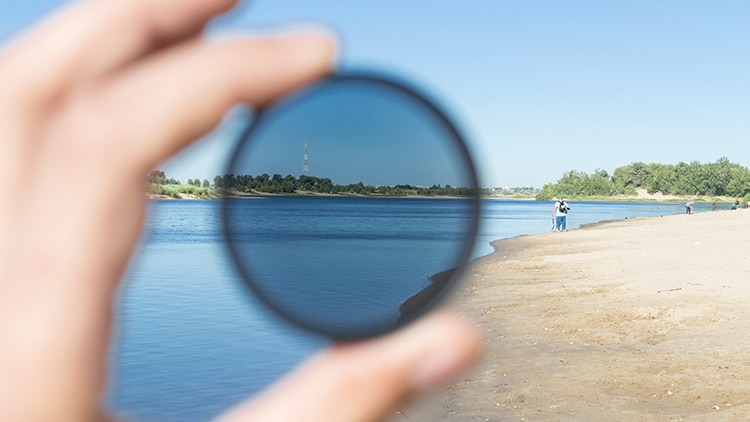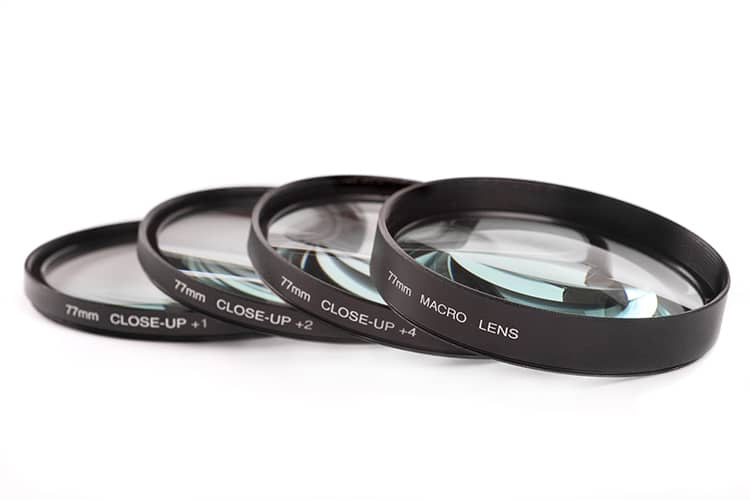9 Camera Filters and Lenses for Your DSLR to Achieve Awesome Effects in Photos

Photo: Stock Photos from CAVAN-IMAGES/Shutterstock
This post may contain affiliate links. If you make a purchase, My Modern Met may earn an affiliate commission. Please read our disclosure for more info.
Do you use filters on your DSLR camera? These affordable add-ons are a great way to spark creativity and explore all that your device is capable of shooting. From multi-image effects to diffused light, filters and art lenses will complete your photography kit.
In the days of only film, filters were necessary to help correct the light or increase contrast. Today, Photoshop offers these same advantages (and more) to digital shooters. However, there are still some things filters can do better—and easier—than you can in post-production. They protect your expensive lenses, too.
Read on to discover just some of your options for fun filters and art lenses.
Easy Filters for Maximum Effect
Cross-Screen Star Effects
View this post on Instagram
A cross-screen filter has an etched grid that scatters the light entering the lens. These filters give a starry, magical vibe to sunlit scenes or nighttime exposures. The shape of the resulting stars as seen in the image depend on the tightness of the grid.
Soft-Focus Filters
View this post on Instagram
A soft-focus filter does exactly as the name implies; it softens an image for a dreamlike quality. While this effect can be achieved with Photoshop, shooting with a filter allows you to view the effect live for the best composition. These filters come in variable densities corresponding to the strength of the blurring effect. These filters are also called diffusion filters as they diffuse the light.
Circular Polarizing Filters

Photo: Stock Photos from DARKSOUL72/Shutterstock
Polarizing filters are very useful, especially if you like street or landscape photography. Like a polarized lens in your sunglasses, the filter polarizes light as it passes through. This has the result of intensifying blue skies and enhancing cloud detail—a boon for landscape images. Street photographers use these polarized filters; too. The polarization allows you to photograph through glass without reflections getting in the way.
Neutral Density Filters
View this post on Instagram
A neutral density (ND) filter is another important tool in your photography arsenal. These filters reduce the amount of light entering the lens by some amount, depending on the filter density. These are useful in situations where you want to widen the aperture or slow the shutter speed but light conditions are restrictive.
Some ND filters are only partial, such as a graduated ND filter. In this case, one half of the lens is shaded while the other is not. These are useful for sunsets or other scenes including very bright and very dark shades.
Multi-Image Filters
View this post on Instagram
Multi-image filters are just plain fun but the effects can also be very artsy. They come in a variety of shapes and sizes, but they all include multiple planes to produce a refraction effect in your shot. Your image appears in multiples, overlapping and merging at times. These filters are fun for photographers who want to push their compositional skills. You will love the pop art results.
Close-Up Filters

Photo: Stock Photos from GIELMICHAL/Shutterstock
These close-up filters are self-explanatory: they provide extra magnifying power. Macro lenses can be expensive, but a set of close-up lenses is very affordable. Most options come in sets with a variety of magnifying strengths which can be used independently or stacked.
Quirky Art Lenses
Fisheye Lens
View this post on Instagram
A fisheye lens provides a very wide field of view. It's the favorite of landlords trying to make their properties look more spacious, but you can use these lenses for artistic purposes. The slight distortion and wide view open the frame to creativity.
Holga Lens
View this post on Instagram
The Holga is a cult-favorite plastic toy camera that has been delighting photographers for decades with its plastic lens and variable results. Now, DSLR users can roll the dice too with the Holga lens. This plastic lens is sold in formats to mount on your favorite cameras from Nikon to Canon. The results are enchanting.
Pinhole Lens
View this post on Instagram
Pinhole photography is minimalism at its best. With a very small hole and a long exposure, the results can be magic. Try pinhole photography with your DSLR by attaching a special art lens and using your camera's manual settings. Like all the lenses and filters, the limit to what you can create is determined by your imagination.
Related Articles:
Long-Awaited Leica Medium-Format DSLR Camera Finally Hits the Market
29 Creative Gifts for the Photography Lover
Learn How the Affordable Kodak Brownie Camera Made Photography Accessible
READ: 9 Camera Filters and Lenses for Your DSLR to Achieve Awesome Effects in Photos
0 Commentaires